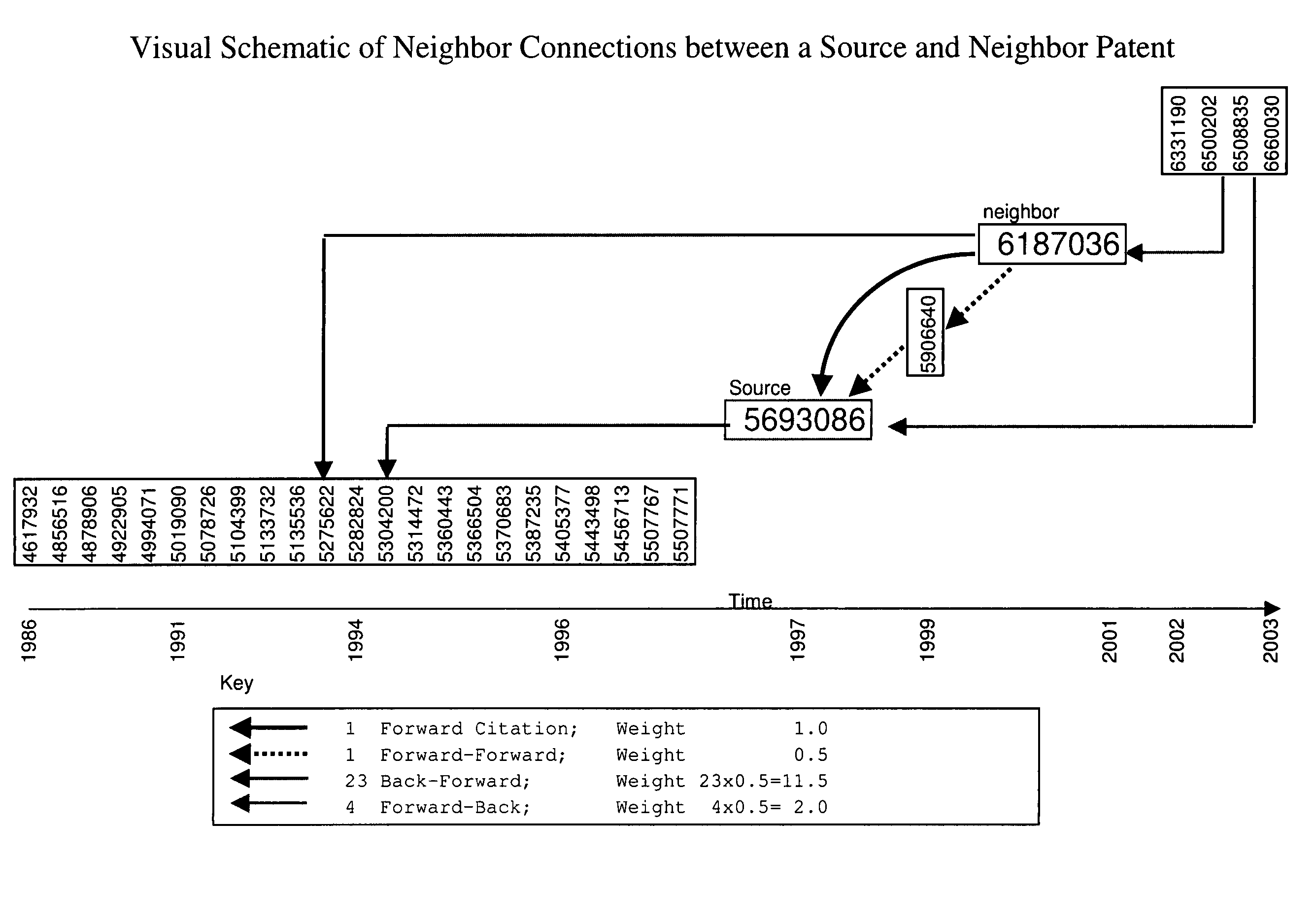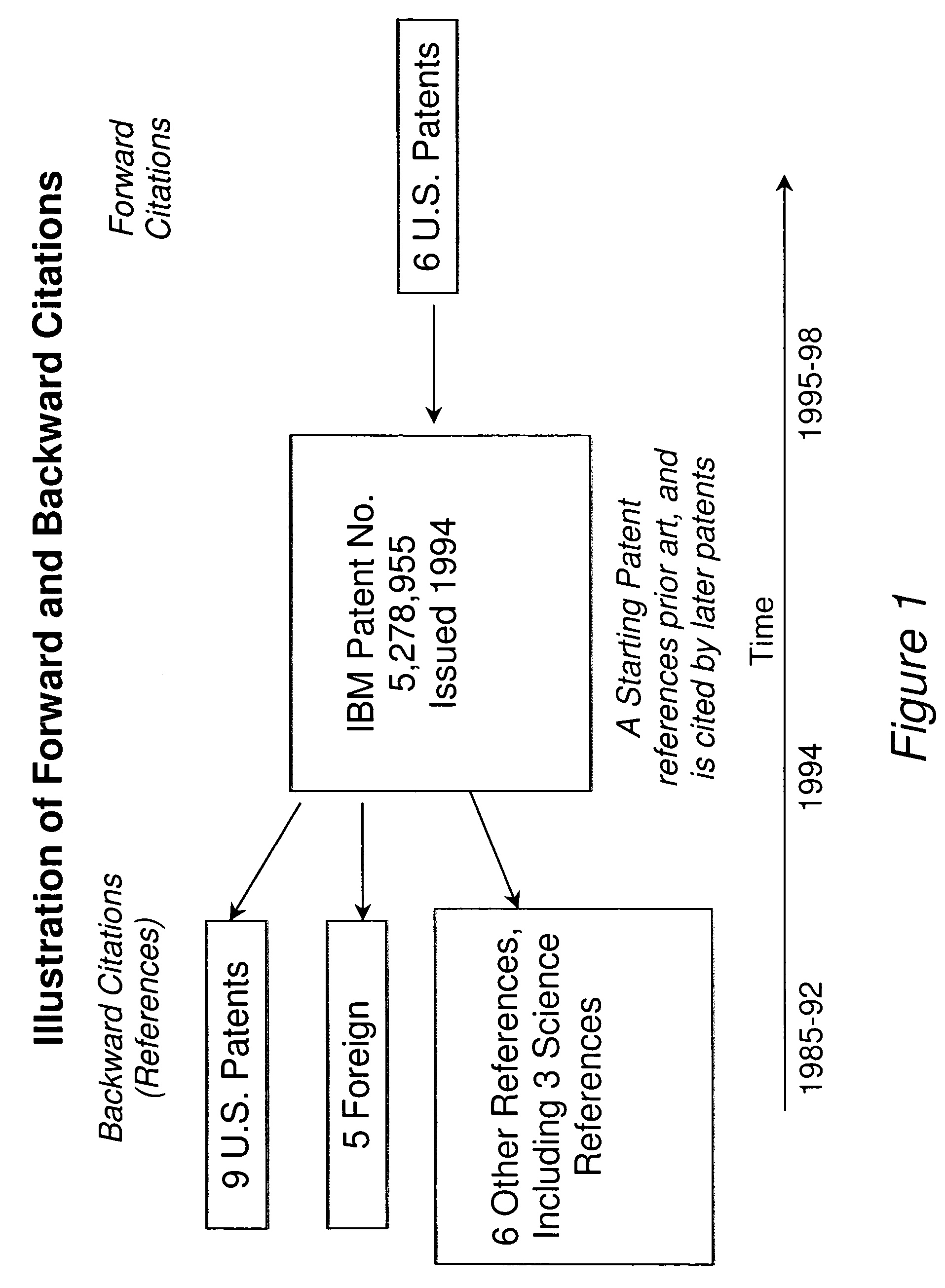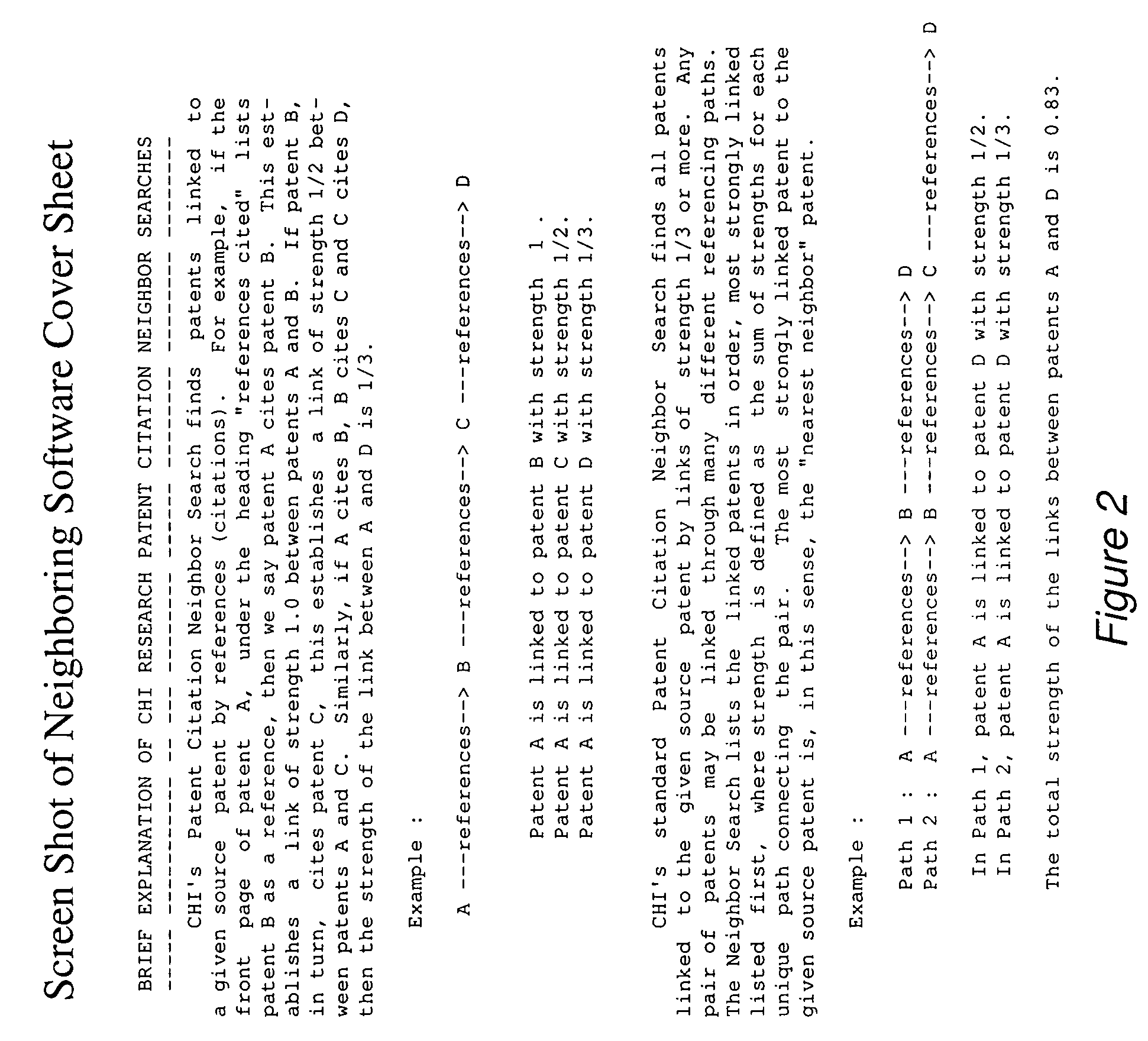Identification of licensing targets using citation neighbor search process
a technology of neighbor search and licensing target, applied in the field of portability databases, can solve the problems of not allowing the patent owners to proactively search, no obvious way of identifying licensees for recent patents through citation analysis, and no way to cluster sets of patents
- Summary
- Abstract
- Description
- Claims
- Application Information
AI Technical Summary
Benefits of technology
Problems solved by technology
Method used
Image
Examples
first alternative embodiment
B. First Alternative Embodiment
[0080]The first preferred embodiment used neighbors built from up to two generations of citations and references. An alternative embodiment can use more than two generations of citations and references to create the neighbor database.
second alternative embodiment
C. Second Alternative Embodiment
[0081]A second alternative embodiment includes the two work tables discussed above, (firstGeneration and secondGeneration). It is most often desirable to exclude the work tables for the reasons discussed above (size and proprietary information). However, for some clients it may be desirable to allow them to identify the intermediate links that cause sets of patents to be neighbors.
third alternative embodiment
D. Third Alternative Embodiment
[0082]A third alternative embodiment uses essentially the same algorithm but uses different weights for neighbor clustering other than 1.0 for first generation citations, 0.5 for second generation citations, and 0.333 for third generation citations.
[0083]The present invention may be implemented with any combination of hardware and software. If implemented as a computer-implemented apparatus, the present invention is implemented using means for performing all of the steps and functions described above.
[0084]The present invention can be included in an article of manufacture (e.g., one or more computer program products) having, for instance, computer readable media. The media has embodied therein, for instance, computer readable program code means for providing and facilitating the mechanisms of the present invention. The article of manufacture can be included as part of a computer system or sold separately.
[0085]It will be appreciated by those skilled in...
PUM
 Login to View More
Login to View More Abstract
Description
Claims
Application Information
 Login to View More
Login to View More - R&D
- Intellectual Property
- Life Sciences
- Materials
- Tech Scout
- Unparalleled Data Quality
- Higher Quality Content
- 60% Fewer Hallucinations
Browse by: Latest US Patents, China's latest patents, Technical Efficacy Thesaurus, Application Domain, Technology Topic, Popular Technical Reports.
© 2025 PatSnap. All rights reserved.Legal|Privacy policy|Modern Slavery Act Transparency Statement|Sitemap|About US| Contact US: help@patsnap.com



